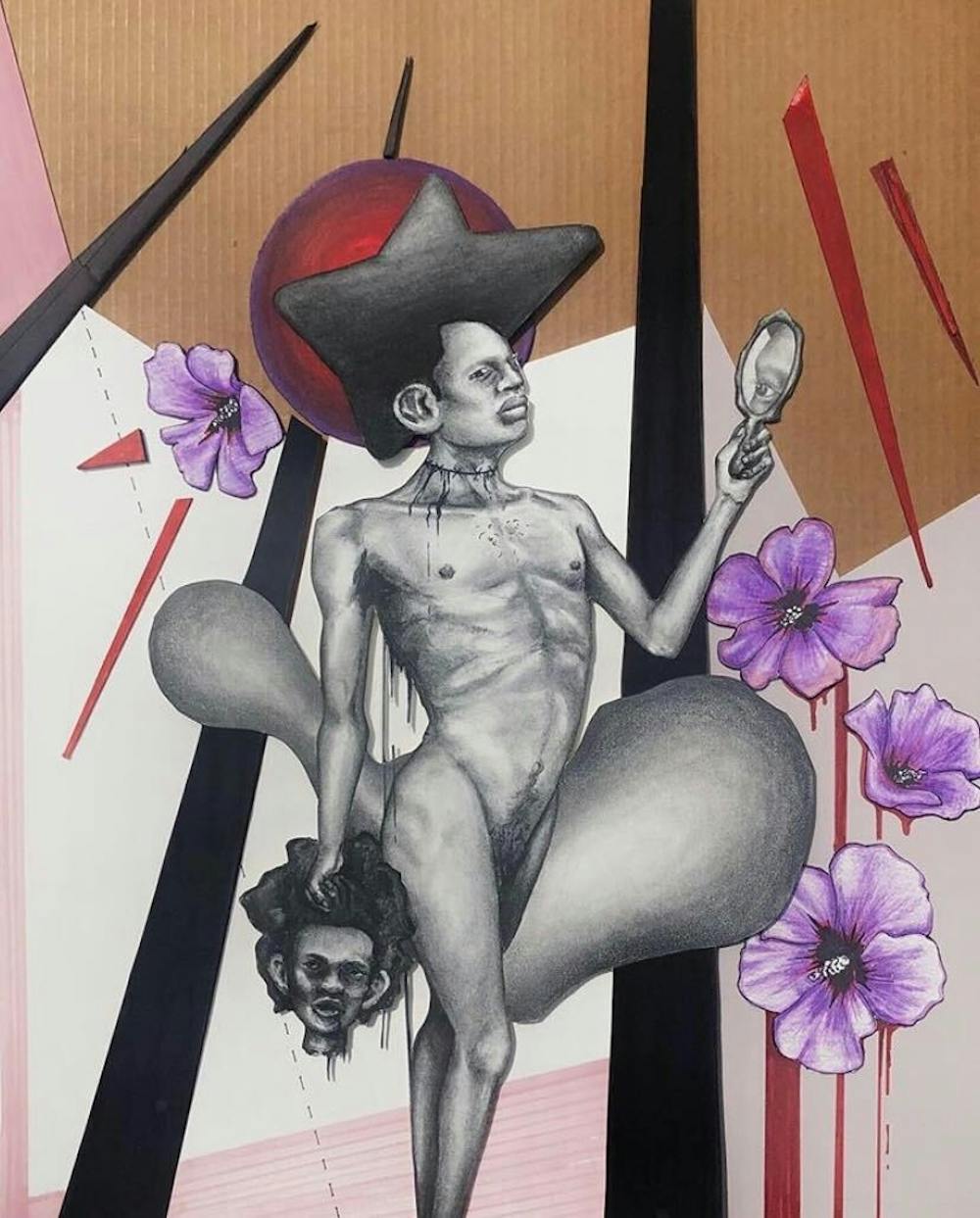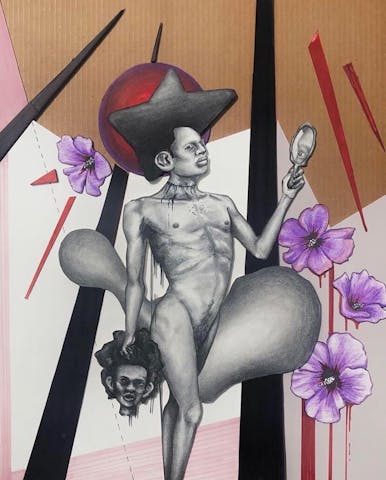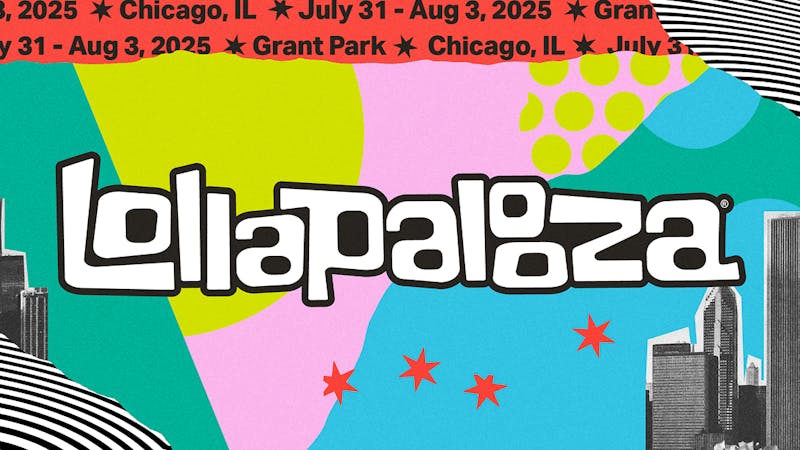Black Art at Rice: A conversation with Preston Branton

Editor’s note: Since spring 2019, the Black at Rice features series has highlighted and celebrated Black voices on campus. As we at the Thresher explore ways to better amplify and honor Rice’s Black community, the Arts & Entertainment section is introducing an extension of Black at Rice that aims to shed light on the inspirations, influences, wisdom and work of Black artists. Any and all art forms from Rice community members are eligible to be featured! Have someone in mind whose art should be in the spotlight? Nominate them here.
For our first installment of Black Art at Rice, we sat down with Preston Branton, a third year architecture undergraduate student who creates visual art, working mostly with charcoal and graphite drawings as well as mixed media collage. Branton spoke on his transition to making more personal art, how he stays inspired, and the role played by animation in imagining a better world. His work can be found on his Instagram art page, @br.u.tal.
The Rice Thresher: What's the story behind the name "Brutal"?
Preston Branton: I think I put that while I was in high school and I rediscovered it this summer. I think it was in one of my journals and I drew a little picture and was like, ‘Oh, this is going to be my artist name.’ I rediscovered it this summer basically because it was quarantine; I was stuck in the house and I was just thinking about ways I can be productive and ways that I can take this time that I'm forced to actually sit in the house and just think. Why not just take the time to really focus on my craft and try and take the whole thing seriously? [A friend] mentioned me actually making a page on Instagram, and that was basically all the motivation I needed. It was instantly after that conversation I just made the account. The name had been rediscovered maybe a few days earlier so I was like, this is perfect, it's all coming together. And then I just started posting.
I really just made [the Instagram account] so I could motivate myself to take it seriously and to continue creating, because I feel like there's some sort of pressure about having a presence on social media where you feel like you need to post at least every once in a while. I think having that as the foundation of it really allowed me to be able to think differently about how I was presenting myself, or think more about what I actually wanted out of my art-making and who I wanted to reach, which has now led me to think about maybe selling prints, like doing something to market myself, and show my stuff to the world.
RT: When did you begin creating art and how has your style evolved since then?
PB: I've been drawing since I was a kid. My dad is an artist, so I was always around art and I definitely started drawing at a very young age. The first things I used to draw were anime. I really loved Pokemon so I would draw Pokemon, and show everybody, and eventually started selling drawings so that I could buy candy. I took art every year in high school. Since then, my voice has definitely changed. The things that I want to talk about and the ideas that I'm exploring are definitely very different and a bit more developed. I think in high school, I was concerned with like, ‘what's the message?’ One of my high school teachers, a lot of the artwork he would show us as examples had to do with social justice, revolution, making this big statement to illuminate injustice in the world or something like that. So I think that that's what I was thinking more in high school — what am I going to use my voice to say? How can I address something that's bad or bring something to light? How can I use my art for that sort of mission?
I'm still trying to do that a little bit, but I think that a lot of my work now is very introspective. I think [at a] certain point in high school, I got caught up in the social justice aspect of art-making, and I felt that I was telling stories that weren't exactly mine and that did not feel right. I wanted to say something about what was wrong, but it felt weird adapting other people's stories. I would make a piece about wrongful and extreme convictions for Black youth or youth of color, and that was a little bit more personal because it was like, [that] sort of applies to me. I haven't had an altercation with police, but [that] could be me. I just noticed that I felt very comfortable and very motivated to talk about things that were working internally in me.
I also lowkey want to be a horror artist. I want to make work that makes you uncomfortable, but it's so pretty. You can't stop looking away, but it's lowkey very eerie or makes your skin crawl. I don't think I've been able to achieve that yet, but that's my goal. I think that when I was younger I was like, I just want to make beautiful things. I would draw a lot of women as well. Now, I want to make beautiful things but I also want to scare you.
RT: Who or what are your biggest artistic influences?
PB: I'm most inspired by everyday people, so I'm constantly going through Twitter and saving pictures on my phone of artwork that I see, photos people have posted of themselves where I like the background or the colors or the pose that I then pull from when I'm actually making my art. Artists [whose work I love] are Kerry James Marshall, Kehinde Wiley, there's some tattoo artists. That surrealist painter that I love, Leonora Carrington, she's amazing.
RT: How does being an architecture student influence your art?
PB: When I actually start doing digital art, architecture will have such a huge influence just because of the actual skills I learn as far as 3D modelling and making renderings. I think that I'll definitely use a lot of those same processes in my digital art because that's all that I know. Other than that, I think that I've learned a lot more about composition. I think that I think a lot more deeply about how things are arranged, how things are placed in relation to borders and in relation to other objects or subjects in an image. Architecture ... breaks down something that normally would appear very simple to a normal person into a catalogue of moves and decisions and abstract ideas. So it's like, ‘Oh, there's a lot of motion in this line. There's a lot of direction in this line.’ As far as composition, I would do certain things because I'm like, ‘Oh, this looks more aggressive, this shape complements the figure, this makes this thing look soft, this gives a lot of motion.’ I think that it's helped me think that way. I think it's definitely also made me integrate a lot more solid shapes and clean geometries into my artwork.
RT: In what ways do you hope to grow as an artist?
PB: I want to become a bit more ritualistic about working and thinking, like setting aside time to actually think and brainstorm and just let my mind wander and run free and meditate, and do things that aid in my creative process and promote those bursts of inspiration. And I want to just be fully daring — take on larger surfaces, get gory if I need to, go crazy and not really think about the outcome, and just think about the process and that moment.
RT: What does visibility and representation for Black artists mean to you?
PB: How I was talking about the concerns in my youth for having this big social impact and calling out injustice, I think that a lot of that has transferred into like, my role is representation and being a voice of a Black queer person with a different thing to say. And also being someone who can make other people feel like they aren't weird for liking certain things, for just being who they are. I think that is extremely important. That's also why Kerry James Marshall is one of my favorite artists. I actually met him once at the Chicago Cultural Center and I was starstruck. I just think that his artwork is so powerful, the way he portrays Black people and Black joy and the Black experience. I can't relate to everything, but it's so good to see it there, and it's so good to see it so big. He has huge works and it's just so beautiful.
I think that it definitely empowers me and has probably subconsciously become a major contributor to my idea of what I want to be as an artist, and what effect I want to have and what things I would want to be doing. Because I want to also be on a wall and I want to be in these spaces. I don't exactly have a goal of being in museums that big or anything, but I also want to make it part of my mission, because it is part of his mission to be that representation and be a voice for so many people and just inspire more art-making.
For a while I was going to be a scientist, I thought I was going to be possibly an engineer or an astronomer or doing something like that. I never thought creativity was that important to me that it was going to be a career. I was like, ‘I'm not going to go to art school and be a broke artist.’ That is commendable and I wish I could do that, but I'm also so scared to not be secure. Now that I value my creativity, I feel like my voice in art, in design, in anything creative, is actually of value and is worth exploring. In a lot of these spaces, imposter syndrome is very real. Now because of Kerry James Marshall, I can feel secure in my artistry, in my creativity, and know that what I have to say is important.
RT: What's your favorite piece of yours and why?

PB: I think that this is the pinnacle of the direction that I need to be heading in as far as my artistic process and the actual quality of the work, and the time and care that went into it. I really liked this thing all the way through.
RT: Based on your own journey, what advice would you give to other Black and POC artists in our campus community?
PB: First off, I would say, there is no right way to be Black. There are shared or common experiences, but no one person's experience is the same. I would inspire all Black and POC artists to really find their unique voice, and really think about their place in the world, all the things that they really value, and just throw it on paper. And watch ‘The Boondocks.’ That's my advice. Watch ‘The Boondocks’ and try to find Black and POC animation. ‘The Boondocks’ is really important, but ‘Afro Samurai,’ there's a show on Netflix based in Mexico and they're doing karate and stuff. I guess because anime is my biggest inspiration. I think things are changing now [to] where there are a lot more people of color in animation, and I think that that's really important to see because animation breaks a lot of problematic tropes of POC and Black people. All the rules of reality can be broken in animation, and I think that that's really important for a person of color's imagination — to see themselves outside of this world that hates them and is preying on their downfall.
I think being able to see yourself in another world that is so positive or where those problems may not exist is really important. It promotes your imagination and gets you thinking in different ways. A lot of times I get really caught up in, "Oh my gosh, the world is so fucked up." And that's really just reality and I can't change that. The world's going to end, Black people are going to keep dying, trans people are going to keep dying, and that's just the world and there's nothing else we can do about it and I just want to remove myself from society, or I'm just depressed in my bed because I'm dreading the future, or dreading the present because the present is depressing as well. Everything around me makes me want to cry. So watching Steven Universe or ... watching Adventure Time, it's just like, "Okay, the world that we want to exist can exist if we make it so."
I think that it really helps to remove yourself a little bit from the real world. Like the thing about people not being able to imagine a world without capitalism? I think that everyone needs to work on their imagination because capitalism wasn't always here, and we haven't explored any solutions. So I think that working on your imagination, watching animation, thinking about all the worlds that don't exist but possibly could is very important for all Black and POC people. That is going to be the only thing that keeps you sane.
More from The Rice Thresher

Review: “Harry Potter and the Goblet of Fire” in Concert with Houston Symphony
I was too young to catch the Harry Potter films in theaters when they first came out, but I still remember my earliest encounter with the series. After racing through the books in second grade, I ran straight to the library to check out the DVDs, clutching them like they were sacred artifacts. Even on a small screen, they felt magical, like the world was opening a secret door just for me.

A Texan’s Lollapalooza survival guide 2025
Unfamiliar with public transit or walkable streets? Terrified of skyscrapers taller than any medical center building? Fear not. This lifelong (for all intents and purposes) Texan was technically born in the Chicago area and is here to keep you alive, hydrated and — ideally — in possession of all your belongings during Lollapalooza. Grant Park opens its gates July 31 through Aug. 3 for Lollapalooza’s annual marathon of music, heat and inevitable port-a-potty searching. Pack your reusable bottle, channel some “Culture of Care” and hit the rail.

7 lesser-known artists to check out at Lollapalooza!
Grant Park’s headliners will draw the masses, but the real bragging rights come from catching tomorrow’s favorites before your roommate has added them to the group Spotify. There are so many great artists performing, and if you float from stage to stage, you just may find your next musical obsession. Here are some possible contenders:

Please note All comments are eligible for publication by The Rice Thresher.